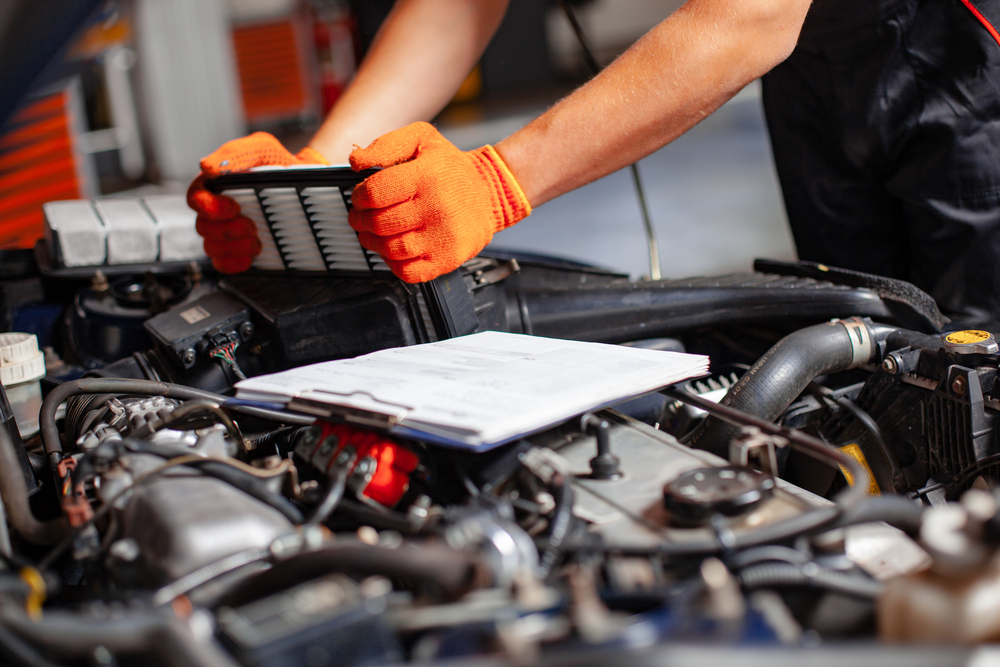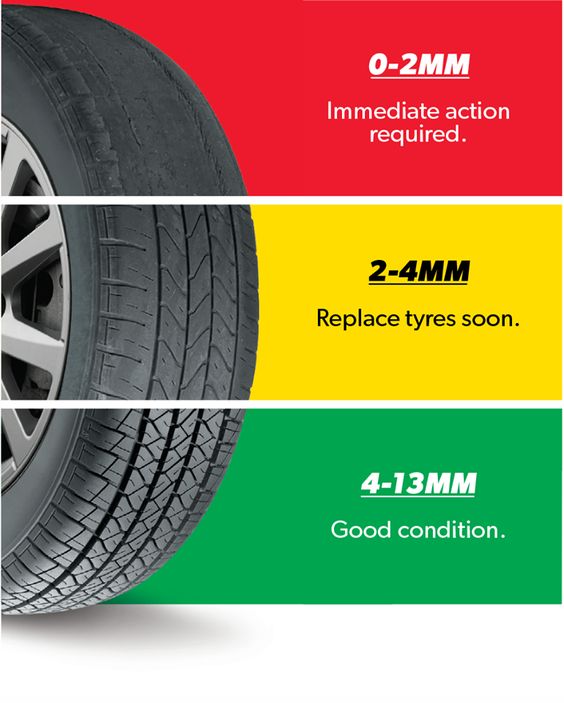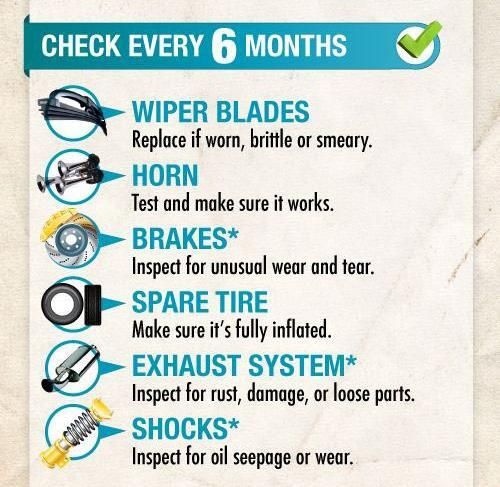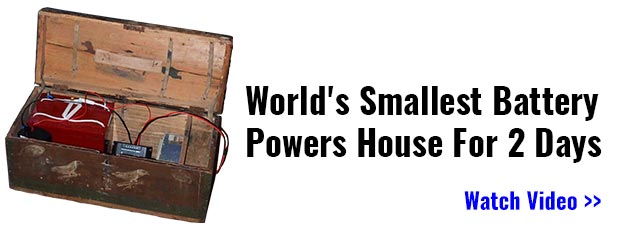Car efficiency is the best way to guarantee car safety.
Preventive maintenance is the fundamental step to increase the life of your car, and assure critical components are running smoothly. Regularly scheduled maintenance to replace old worn parts might be a great way to save thousands of dollars. With normal wear and tear, breakdowns could show up and cause major issues and expenses. This is why by improving your car’s safety you are also minimizing unexpected road emergencies.
Portable Device Generator – Learn How To Build Your Own Energy Generator!
Moreover, maintenance has many benefits. It enhances vehicle performance, raises the resale value, aids the environment, and gives you a dealership-looking vehicle. To keep an optimum vehicle, the following maintenance tips will help you do your weekly car inspection and to identify malfunctions early on.
1. Inspect Fluids Level: Oil and Coolant
For a safety inspection of these, the engine must have cooled down. Take out the oil dipstick and carefully clean it. Then, put it back again and pull. The oil level on the stick reveals the oil level inside. Performing a radiator flush assures its system is working properly. Since working with temperature is risky, make sure you know how to do it or leave it to a professional. It is important to check also the power steering fluid and transmission fluid levels.
2. Air Filter Check-Up
Air filters should be changed every 12 months or every 12,000 miles. This is a minor replacement and a saving money move. To do this locate your filter, and after removing the casing, remember the position of the air filter inside. Remove it and clean out the debris with compressed air if it is not that dirty. Otherwise, replace for a new one, but be sure you have the right type of filter. Then, place the filter into its housing in the position noted and you are ready to go.
3. All About Tires
Tires are key parts of a car’s exceptional performance. Inspecting tires regularly is a time and money-saving strategy. Checking and adding air is easy to do by yourself. Most people tend to skip the fifth tire, but forgetting about the spare one can become an auto-sabotage move.
To make them last longer, get your tires rotated and balanced. This guarantees a comfortable and safe drive. Doing it every 6,000 to 8,000 miles prevents car accidents caused by losing control. Many factors like worn bars and incorrect alignment can cause noise and vibration problems. By rotating your tires, you extend their lives.
However, nothing lasts forever. An easy way to know if it is time to replace tires is through the simple penny method. Regardless if they come from a custom wheels manufacturer or not, your vehicle needs a new set of custom wheels if after inserting a penny into the tire’s groove you can see all of Lincoln’s head. Remember to put Lincoln’s head upside down. Being able to see Lincoln means the tread depth is less than 2/32 inches and it is a risky situation.
4. All the Lights Are Important
Headlights are easy to change. It takes about 15 minutes. Although it is very easy, it is more beneficial to find an online video for better understanding. Hand’s oils and dirt particles weaken the bulb surface, and it may crack after heating. Therefore, avoid touching it while changing it.
Learn to identify the keyboard lights. They all are important and let you know if there is an engine or electrical fault, brake or ABS, and whether coolant or oil levels are low.
5. Fuel Filter Replacement and Oil Economy
An engine’s first and more affordable line of protection is a fuel filter replacement. This can be an advanced DIY process and you need to be sure of what you are doing before even starting. Messing with the fuel system pressure is a dangerous situation for both car and owner. Going annually to a professional for this checkup might be clever if you are not handy or do not feel prepared for this.
Keeping track of fuel economy will help you recognize any decrease in efficiency on time. It is wise to stick to the one octane recommended for your vehicle for preventing engine problems.
6. Nice and Shine!
If the goal is to keep the car in better condition, cleaning is a crucial step. Car washing and car-care products are not a needless expense; they add cosmetic value to the vehicle. A professional looking car wax finish and keeping your vehicle under a car cover protects the car panels against the sun and environmental damage.
A clean car interior makes driving comfortable. Making quick trash cleaning each time you exit the car helps you to keep the dirt at bay. Vacuum and using protectant on leather, plastic, and rubber parts once every few weeks keeps the car fresh and dealership-like looking. Cleaning the exterior engine is not essential. However, minor debris and fluids – like brake fluid- can cause damage and hinder the early discovery of leaks and other problems.
7. Cooling System Working Properly
Cooling system hoses carry the engine coolant. Those and heater hoses are in constant high-pressure and wear and tear can eventually have unwanted effects. Replacing those and the coolant reservoir on time and tightening loose clamps prevents their fluids from leaking and further overheating engine problems.
8. Spark Plugs Replacement
Worn out and buildup-covered spark plugs reduce engine efficiency. Sparks plugs and its wires checkups allow detecting bad conditions on time. Replacement for those is suggested for 30,000 miles or more, but the owner’s manual displays the specific recommendation for your vehicle.
9. Serpentine Belts Inspection
Serpentine belts are small-priced items that can cause huge reparation expenses. A serpentine belt fails can cause irreversible damage to engine parts. They should be checked every 40,000 to 60,000 miles, but as with previous parts, the owner’s manual has the best information about your car. However, a car service center will tell you if the belt should be replaced.
10. Replace the Wipers
Keeping a clean windshield not only avoids the visual impairments and car accidents but also prevents windshield scratches caused by wipers dragging dirt and particles through the glass. This leads to the entire windshield change.
Since driving requires a clear view of the road, wipers malfunction during the rainy season can cause accidents. Perform regular cleaning and checkups to assure wipers’ proper function.
11. The battery in Optimum Performance
Checking your battery guarantees the supply of electrical energy to your whole vehicle. From the cables and their connections to the terminals and voltage, keeping the battery in optimum conditions prevents you from being stuck in an awkward situation. Mineral build-up and leakage cause malfunction. Cleaning those with a battery cleaning brush and applying dielectric grease helps them stay free of corrosion.
You can test its voltage with a multimeter. A fully charged battery is about 12.4 to 12.7 volts with the engine off. It can reach 13.7 to 14.7 volts with the engine on. A low voltage can also come from the alternator. In this case, lights dim or intensify as the engine speeds up. Remember to turn your lights off at night to avoid draining your battery. It can look silly but it happens quite a bit.
12. A Crucial Element
Brakes fail to work properly due to several causes. From rotors and pads malfunction to brake fluid leaks, checking your brakes system on time can save you from terrible accidents for yourself and others. Brake pads replacement should happen around every 20,000 miles, but if you are a “stop-and-go” driver, it should be more often. If the brakes start showing an out of the ordinary response, it is a good idea to check them.
For doing so, getting under the car and removing the tires is necessary. If you are still mastering minor repairs, it is wise to let a professional do this for you. The best way to keep your vehicle safe is to recognize when to do it yourself and when to get outside help.
Since your driving skills affect your car conditions, driving smartly, and safely will prevent faster wear off and damage. It is wise to carry car tools like wire cutters, screwdrivers, and a flashlight to be better prepared for any eventuality.
Keeping your vehicle on top condition requires regular maintenance. Moreover, maintaining your car in shape has not only time and money-saving benefits but it also brings peace of mind and pride of ownership.



























































































